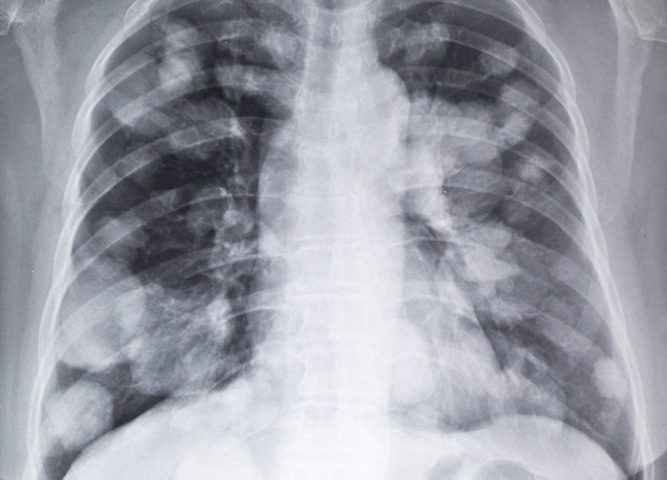Researchers at Brown University demonstrated that controlling a key protein involved in cancer, through the activation of a specific immune response, can prevent cancer metastasis in mice’s lungs. The findings are described in the study “RIG-like Helicase Regulation of Chitinase 3-like 1 Axis and Pulmonary Metastasis,” published in the journal Scientific Reports.
The Chitinase-3-like-1 (CHI3L1) protein has been demonstrated to play a major role in inflammation and tissue repair. Dysregulation of CHI3L1 is therefore associated with the severity and progression of a number of diseases, including asthma and pulmonary fibrosis, where it induces harmful immune responses and fibrosis, respectively.
In cancer, particularly in solid tumors, CHI3L1 is also dysregulated, and its circulating levels have been shown to be increased in patients with lung, prostate, colon, kidney, breast, and malignant melanoma, among others, where they correlate with disease progression and decreased survival.
Previous studies from the research team demonstrated that the CHI3L1 protein had a central role in metastasis formation, by rendering the tissues receptive to cancer cells.
“It seems to be a very fundamental pathway,” said Dr. Jack A. Elias, dean of medicine and biological sciences at Brown University, a specialist in pulmonary medicine and immunology, and the study’s senior author, in a press release. “It’s not a pathway that’s just in this disease or that disease. It’s a fundamental way that the body responds, and as a result it has many different consequences.”
Now, the researchers have uncovered a new pathway that blocks CHI3L1 and inhibits cancer spread. This pathway, known as RIG-like helicase (RLH), has a major role in antiviral responses, and when activated it counteracts the cancer cell’s ability to induce CHI3L1, decreasing tumor progression.
Elias’ team used an RNA-like molecule, called Poly(I:C), that stimulated RLH activation, demonstrating that this treatment allowed mice to prevent pulmonary metastasis following injection of melanoma cells, whereas control mice developed lung metastasis within two weeks. Researchers found that metastatic cancer cells were able to suppress RLH responses by augmenting the expression of a protein called NLRX1, but Poly(I:C) stimulation was able to revert this suppression, suggesting that the activation of the RLH pathway might be a potential target in cancer therapies.
The authors also demonstrated that among the effects of RLH activation, an increase in natural killer (NK) cells (a subset of immune cells) was also observed, along with upregulation of proteins that recruit NK cells, stimulation of LIMK2 and PTEN, and suppression of B-Raf and NLRX1. Although some of these proteins have been tested as targets for cancer therapies, they have never been targeted all at the same time.
“What we show in this paper is there is a very novel pathway, the RLH pathway, that can actually control the production of CHI3L1, and when you can control the production of CHI3L1, you can control each of these pathways, and you can control the spread of cancer in these models” Elias said.
“The thing that’s exciting is that [stimulating the RLH pathway] is going to allow multiple antitumor response to be augmented vs. just one. If you can agonize the RLH pathway, you might get a really good effect in cancer,” he concluded.

